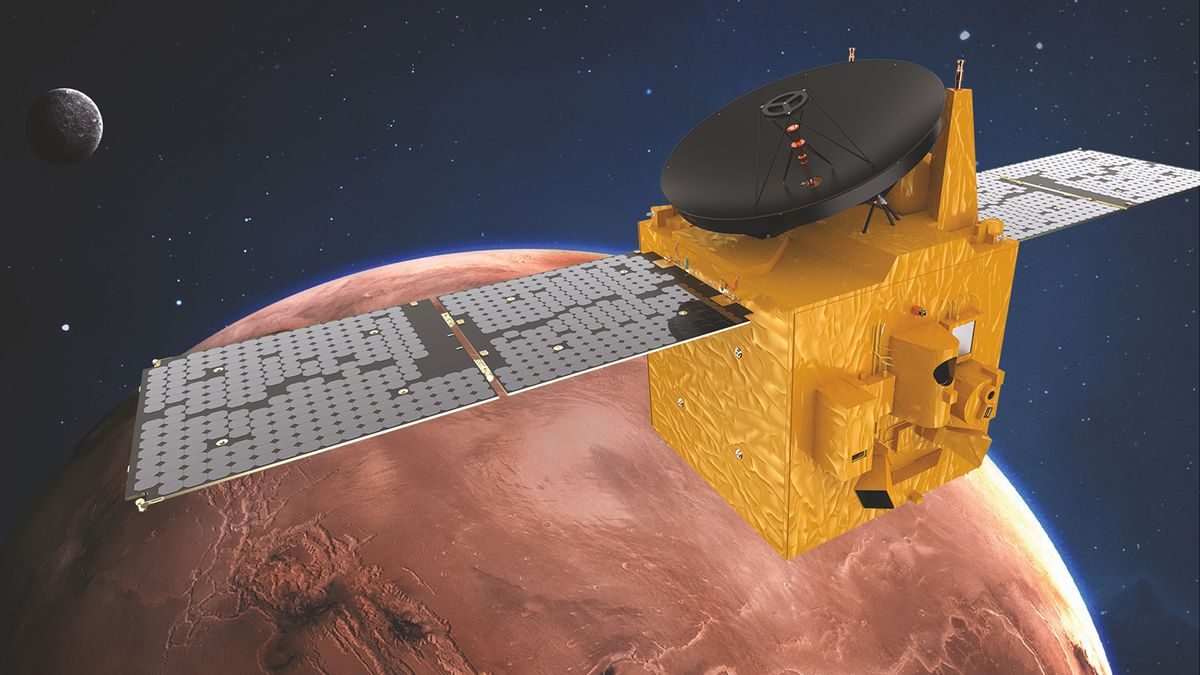The first mission of the United Arab Emirates in Mars it will reach the Red Planet on February 9, 2021, Emirati government officials said on Sunday (November 8).
The mission Hope orbiter is expected to arrive on Mars in the same year as the country’s 50th anniversary, UAE officials said in a statement shortly after Hope successfully completed her third trajectory correction.
The Hope mission, Crown Prince Hamdan bin Mohammed Rashid Al Maktoum added in the same statement, “marks the beginning of another 50 years that will lead to important results based in the fields of science, knowledge and innovation.” The UAE is using the mission as a stimulus to encourage scientific innovation among researchers and educators in the country, the statement said.
Related: The United Arab Emirates Hope mission to Mars in photo
Should Hope arrive safely on Mars, the UAE will be the fifth entity to successfully send a mission to the Red Planet after NASA, the Soviet Union, the European Space Agency and the Indian Space Research Organization. So far, the spacecraft has reached 60% of its path to Mars since its launch on July 20 . A fourth correction maneuver of the smaller trajectory is planned on 29 December.
While Hope travels to Mars, her ground team in Dubai checks the spacecraft’s health two or three times a week. The last important step will be entering the mission’s orbit, which will require the probe to slow down and enter orbit around Mars without real-time help from Earth. (Signals from Earth to Mars typically take 13 to 26 minutes for a one-way trip.)
Hope is gathering some scientific observations along the way to the Red Planet. Over the next few months he will observe hydrogen near Mars using a spectrometer and examine interplanetary dust Using star trackers, Emirate Mars Mission project director Omran Sharaf said in the same statement.
Hope’s hydrogen observations will be calibrated with a spectrometer on the Japanese and ESA’s BepiColombo spaceship, which just swung from Venus a few weeks ago on his seven-year journey to Mercury. Data collected by Hope and BepiColombo should provide more insight into how hydrogen is distributed between planets, the UAE government said.
The scientific phase of the mission to Mars will begin approximately 75 days after insertion into orbit. Hope’s orbit will be approximately 620 miles to 30,500 miles (1,000 to 49,000 km) above the Martian surface.
The spacecraft is expected to stay in orbit and collect data for at least one full Martian year, which is 687 Earth days. Some of Hope’s scientific contributions will include the world’s first examination of Martian atmospheric and weather dynamics, according to the UAE.
Follow Elizabeth Howell on Twitter @howellspace. Follow us on Twitter @Spacedotcom and on Facebook.
